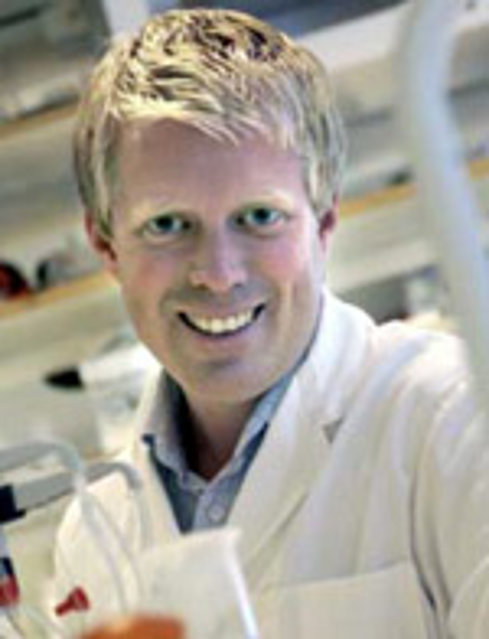2005 Award Winner Dr. Thomas Helleday Arrhenius Laboratory Department of Genetics, Microbiology and Toxicology, Stockholm University

Appointment at time of winning the Award
2005 - Research Fellow (funded by Research Council, under evaluation for a full professorship - the position is for a professorship), Dept. of Genetics, Microbiology and Toxicology, Stockholm University, Arrhenius Laboratory, Sweden. 2004 - Senior Lecturer, Institute for Cancer Studies, University of Sheffield, Medical School, UK.
Abstract
About five to ten percent of breast cancers are due to an inherited defect in the BRCA1 or BRCA2 genes. The BRCA1 and BRCA2 proteins are involved in recombination repair to prevent genetic instability and outgrowth of cancer. Poly(ADP-ribose) polymerase (PARP-1) is involved in a separate repair pathway that normally is not critical for survival or in preventing cancer formation.Now, we show that the PARP-1 repair pathway becomes critical for survival in absence of BRCA2-dependent repair. We exploit this requirement to specifically kill BRCA2 deficient tumours by PARP-1 inhibition alone. Treatment with PARP-1 inhibitors is likely to be highly tumour specific since only the tumours (which are BRCA2-/-) of the BRCA2+/- patients are completely defective in homologous recombination.This treatment is likely not going to cause many side effects; since PARP-1 knockout mice live and are healthy and prolonged treatments with PARP-1 inhibitors are well tolerated in mice and humans. As PARP-1 inhibitors are non-toxic, we suggest that PARP-1 inhibitors might be useful as a prophylactic treatment for women carrying a BRCA1 or BRCA2 mutation. In this case, the PARP-1 inhibitor kills the cancerous cells that lost the functional BRCA1 or BRCA2 allele before they grow out to a tumour.Thus, PARP-1 inhibitors may replace the current prophylactic surgery of breasts and ovaries performed on many carriers of BRCA1 or BRCA2 mutations. The use of an inhibitor of a DNA repair enzyme alone, in the absence of an exogenous DNA damaging agent, to selectively kill a tumour represents an exciting new concept in cancer treatment.
